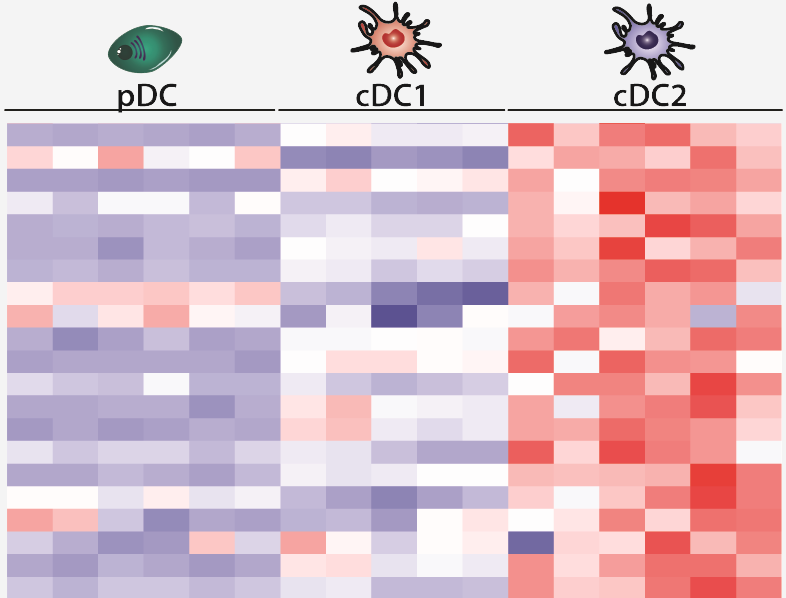Publications
Understanding the Genetic Program of Conventional Dendritic Cells Type 2 with Direct Cell Reprogramming

September 18, 2019
MSc. Thesis - University of Coimbra
Luís Filipe Henriques Oliveira
Resources:
Summary
Dendritic cells (DCs) constitute a remarkable heterogeneous blood lineage responsible for linking innate and adaptive immune responses. Conventional DCs (cDCs) function as professional antigen-presenting cells (APCs) by presenting captured antigens to naïve T cells and can be further divided into two major subsets: cDC type 1 (cDC1) and type 2 (cDC2). While cDC1 mainly perform antigen cross-presentation and cytotoxic CD8+ T cell priming, cDC2 are specialized in major histocompatibility complex class II (MHC-II) presentation, leading polarization towards different CD4+ helper or regulatory T cell phenotypes. Some cDC2s govern type 2 immune responses against parasites and others sense extracellular bacteria and initiate type 3 immunity. Partly due to their high heterogeneity when comparing with other DC subsets, the genetic program underlying cDC2 cell fate determination and diversity remains unclear. Epigenetic reprogramming strategies allow the induction of a somatic cell directly into different cell types. By overexpression of transcription factor (TF) combinations, this strategy is already vastly applied to the generation of multiple cell types in the context of regenerative medicine. Recently, reprogramming of fibroblasts into cDC1-like induced APCs was proven by the expression of PU.1, IRF8 and BATF3, paving the way to modulate immune responses with cell reprogramming. Here, this combinatorial TF strategy was modified to induce cDC2 lineage diversity and unravel the genetic drivers of cDC2 heterogeneity. PU.1 and IRF4 were shown to be crucial in cDC2 development but not sufficient for cDC2 reprogramming. An additional set of 33 candidate TFs to induce cDC2 cell states was identified by combining literature and bioinformatic analysis. Candidate TFs were cloned into inducible lentiviral expression vectors and were tested in mouse embryonic fibroblasts (MEFs) bearing the Clec9a-tdTomato and Zbtb46-GFP DC-reporter systems. Additional surface markers for the cDC2 lineage were validated by analysis of splenocytes and used to further confirm cDC2 reprogramming. Several combinations of TFs were shown to differentially activate the Clec9a and Zbtb46 reporters and surface marker expression. PU.1, IRF4 and TF18 dramatically increased reporters’ activation, CD11b expression and induced tdT+CD11b+ and tdT+Sirpα+ double positive cells. This combination also shown to induce CD45 and MHC-II expression, suggesting acquisition of competence for antigen presentation. TF9, and TF17 addition to PU.1 and IRF4 also resulted in reporter activation and surface marker expression although not synergistically enhancing TF18’s effect, therefore suggesting a differential cDC2 cell fate induction. Overall, several TF combinations were identified for cDC2 reprogramming. These results open new possibilities for a better understanding of the diversity of cDC2 specification and provide a platform for generating patient-tailored reprogrammed cDC2 for immunotherapy.